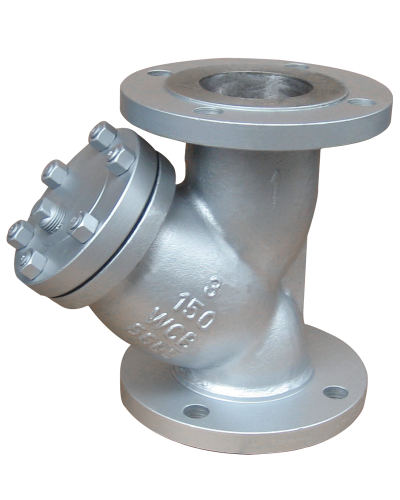В любой эффективной и надежной системе смазки чистота масла является основным фактором, влияющим на срок службы оборудования и эффективность его работы. Фильтры , как передовые фильтрующие устройства в системах смазки, играют важную роль в предварительной фильтрации. Однако инженеры и операторы часто поднимают следующие вопросы: может ли масло проходить через сетчатые фильтры плавно? Какова именно функция сетчатого фильтра? Чем он отличается от последующих фильтров тонкой очистки?

В этой статье систематически объясняется роль фильтров в системах смазки, рассматриваются принципы их работы, цели предварительной фильтрации и практическое применение в различных системах.
Ответ: Да, но с ограничениями.
Фильтр грубой очистки — это по сути фильтр низкой точности, изготовленный из сетки из нержавеющей стали или перфорированных металлических пластин. Он имеет равномерные поры, обычно размером от 80 до 500 мкм (микрометров), что позволяет большинству чистых масел беспрепятственно проходить через него.
Такие частицы, как металлическая стружка, фрагменты уплотнений и углеродистые отложения в масле, задерживаются сетчатым фильтром, предотвращая их попадание в масляный насос или другие важные компоненты.
Низкие температуры или высоковязкое масло могут снизить скорость потока или даже вызвать закупорку. Это одна из причин низкого давления масла во время запуска системы.
Внутренние компоненты насоса (шестерни, рабочие колеса или плунжеры) очень чувствительны к твердым частицам. Предварительная фильтрация предотвращает попадание частиц в насос, что позволяет избежать преждевременного износа или заклинивания.
Задерживая крупные загрязняющие частицы, сетчатые фильтры позволяют первичным фильтрам (например, картриджам масляных фильтров) сосредоточиться на более мелких примесях, продлевая срок их службы и поддерживая стабильный поток в системе.
Предварительная фильтрация снижает такие риски, как отказ насоса, закупорка отверстий и нарушение смазки, вызванные посторонними частицами, что повышает общую надежность системы.
|
Система приложений |
Положение установки фильтра |
Тип фильтра |
|
Смазка двигателя внутреннего сгорания |
Масляный поддон → Вход насоса |
Металлический фильтр грубой очистки |
|
Гидравлические системы |
Выходное отверстие бака → Всасывающее отверстие насоса |
Всасывающий фильтр или сетчатый фильтр-корзина |
|
Системы смазки турбин |
Входное отверстие насоса |
Двухкамерный переключаемый всасывающий фильтр |
|
Системы трансмиссии/сцепления |
Масляный поддон → Вход циркуляционного насоса |
Перфорированная пластина + магнитный фильтр |
80–100 мкм: типично для масляных систем двигателя.
150–300 мкм: используется в гидравлическом оборудовании.
>400 мкм: подходит для систем низкого давления или систем с открытым контуром.
Суровые условия эксплуатации или периоды обкатки нового оборудования: проводите очистку каждые 200 часов.
Нормальные условия эксплуатации: очищайте или заменяйте во время интервалов замены масла.
Фильтры обеспечивают только первичную фильтрацию и не могут удалять мелкие частицы или эмульгированные загрязняющие вещества. Они не заменяют фильтры тонкой очистки (например, навинчиваемые масляные фильтры).
|
Симптом |
Первопричина |
Решения |
|
Ненормальное давление масла при холодном пуске |
Низкая температура масла, высокая вязкость, плохая пропускная способность фильтра |
Разогрейте масло или используйте низкотемпературное масло. |
|
Частое засорение фильтра |
Сильное загрязнение маслом или износ компонентов |
Заменить масло, очистить бак, проверить износ |
|
Разрушение/деформация фильтра |
Недостаточная прочность или чрезмерный вакуум |
Переход на усиленные фильтры |
|
Повышенный шум системы |
Частичная закупорка, вызывающая кавитацию |
Очистите сетчатый фильтр, проверьте высоту всасывания. |
А1: Фильтры в основном используются для грубой фильтрации на стороне всасывания, обычно многоразовые и могут быть очищены. Фильтрующие картриджи устанавливаются на стороне нагнетания для тонкой фильтрации, обеспечивая более высокую точность, но обычно являются одноразовыми.
A2: Не рекомендуется. Фильтры эффективно предотвращают попадание частиц в масляный насос. Удаление может привести к повреждению насоса или даже отключению системы.
A3: Рекомендуется проверить уплотнительное кольцо на предмет старения или деформации. Замените, если оно повреждено, чтобы избежать утечек воздуха или масла.
A4: Теоретически да, но чрезмерно плотная сетка может ограничить поток масла, создать вакуумное давление или вызвать кавитацию. Тщательно оцените допустимое падение давления в системе перед внедрением.